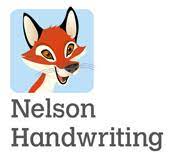

Writing
Class Texts
Each class has a class text that is linked to the topic for that term. These texts are used to support the children’s reading and writing skills across the wider curriculum. The use of these high-quality books is used to engage and support children to become motivated and independent readers and writers.
Using the class text, teachers plan writing opportunities that allow the children to practise, learn and apply grammar, punctuation and spelling skills within a context. These texts also enable teachers to teach a range of comprehension strategies using a text that may be of a level beyond the children’s own reading fluency level.
We also believe that children produce the most effective writing when they are offered real experiences and purposes for their writing. Where possible, writing opportunities are also linked to educational visits, events or memorable experiences. The process of editing and redrafting is introduced to pupils from Key Stage 1 onwards, so that they can evaluate and improve their own work effectively.
Vocabulary and Grammar
As a staff, we are aware that the more words children know and understand, the more successful they are likely to be in their learning. We therefore take every opportunity to extend pupils’ vocabulary. Key vocabulary is identified for each topic taught and pupils are provided with a glossary or word mat and encouraged to use the vocabulary in spoken language and writing. Staff ensure that the meanings of the vocabulary identified are explained to pupils. Where possible, grammar is taught as part of the teaching of writing and new features are introduced with the relevant genre, but some discrete teaching of grammar is also necessary to ensure effective coverage.
Handwriting

To ensure a consistent whole-school approach to teaching handwriting for Reception to Year 6, we follow the Nelson Handwriting scheme. Nelson Handwriting is a whole-school programme designed to help all children develop a confident, legible and personal handwriting style and meet higher curriculum expectations. Our aim is to teach each child to write legibly, fluently and at reasonable speed.
In our schools, class teachers are generally responsible for teaching handwriting to their own classes, and there are many opportunities to practise the skills of handwriting in the course of writing across the curriculum. However, it is also necessary to provide regular lessons for the teaching and/or revision of handwriting skills. The frequency and length of handwriting lessons is likely to vary according to the age and competence of the pupils. With young children it is appropriate to have short, daily lessons, while older pupils may benefit from one or two longer sessions each week. The amount of time devoted to handwriting may also depend on the point reached in the programme. For example, it may be helpful to provide extra lessons when joins are being introduced.
